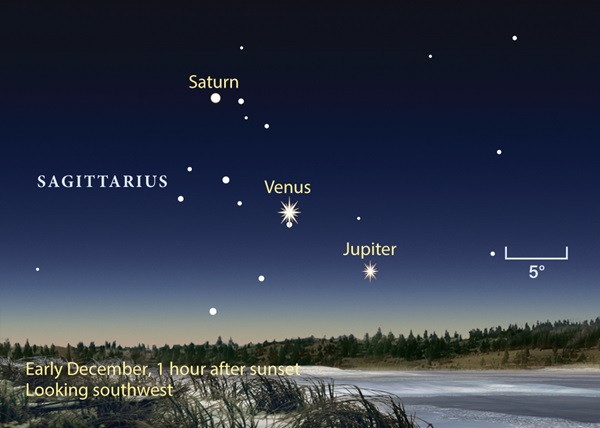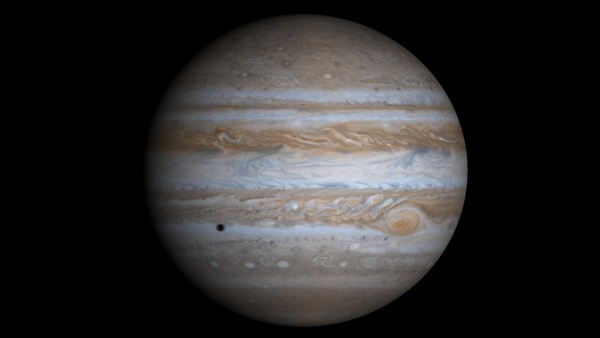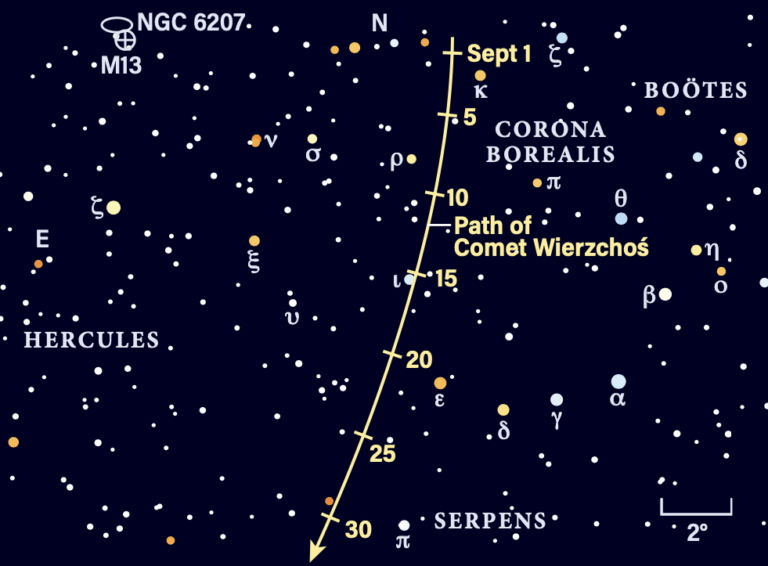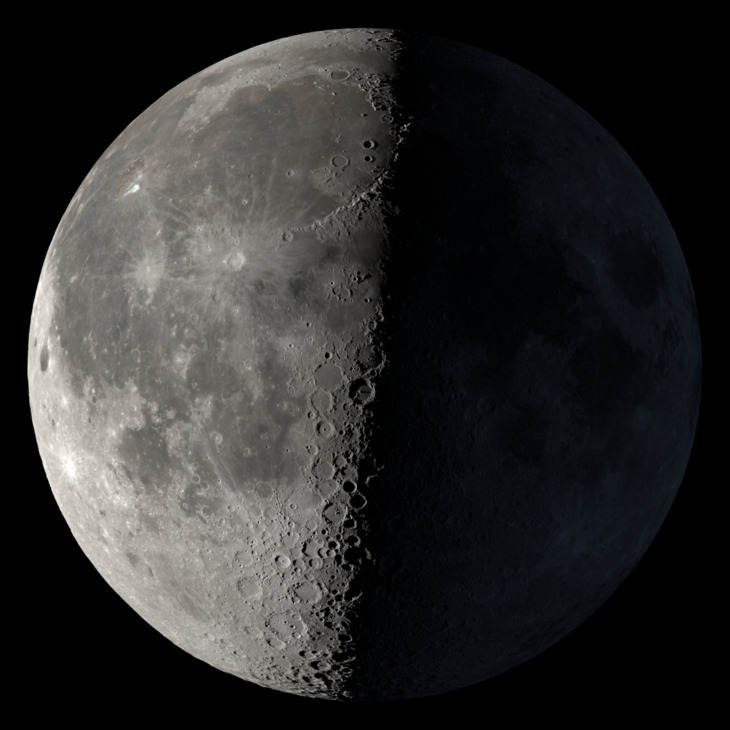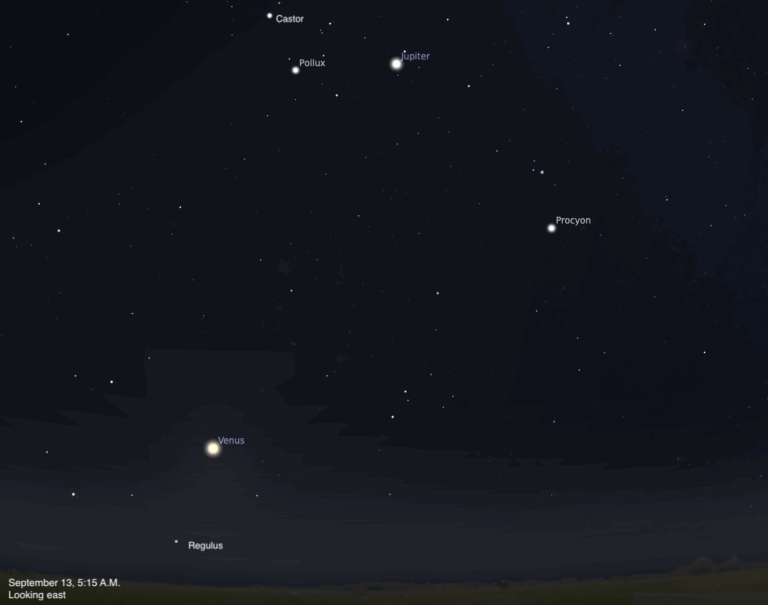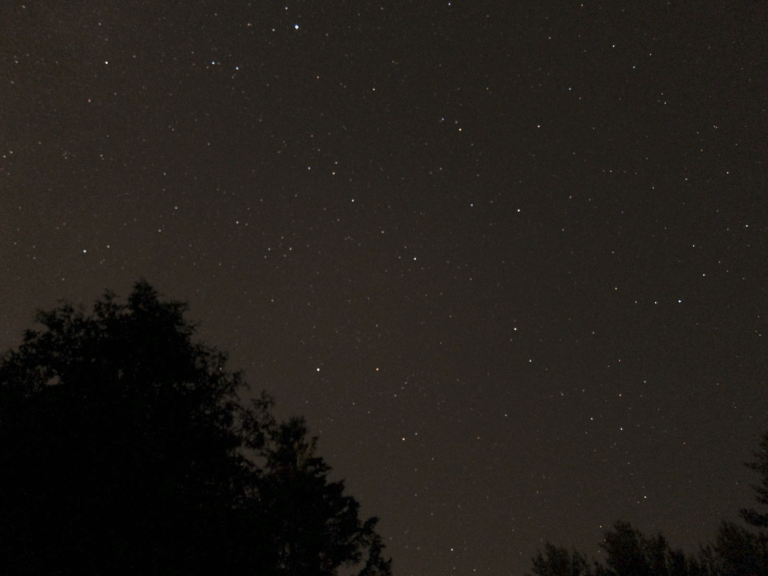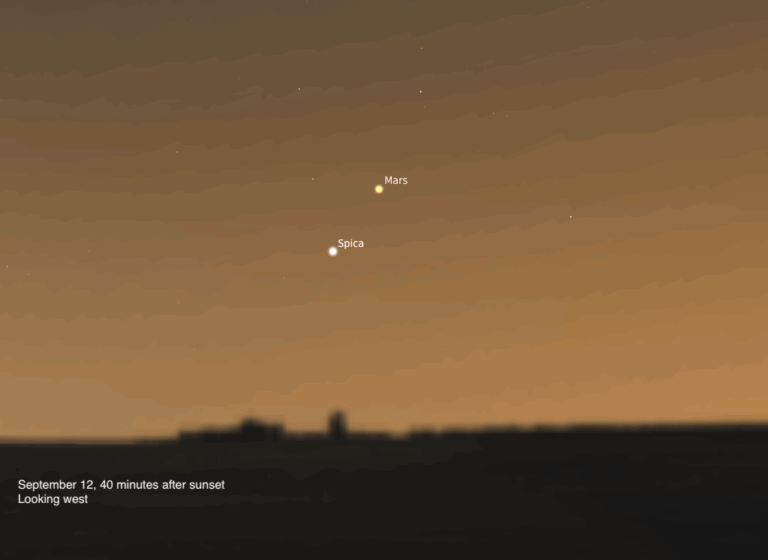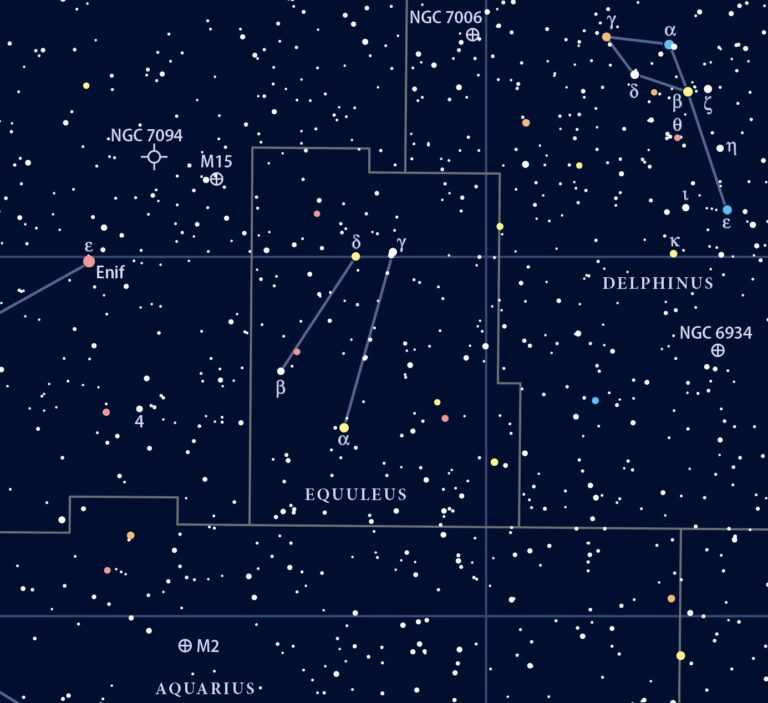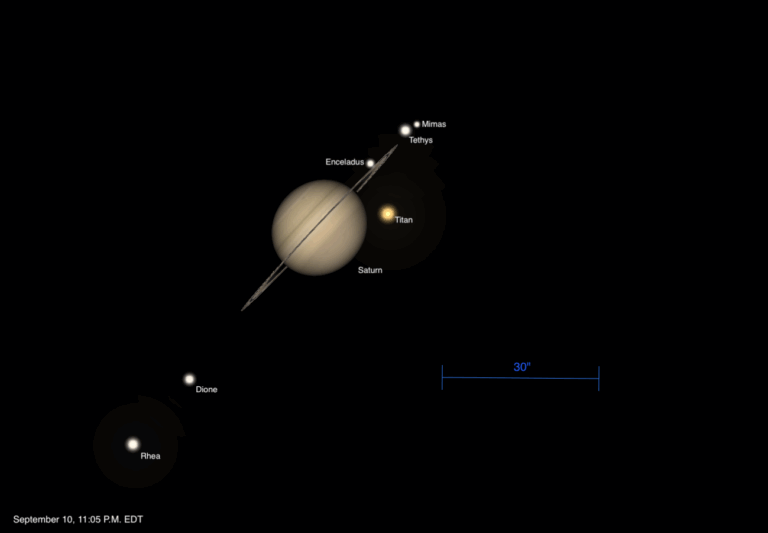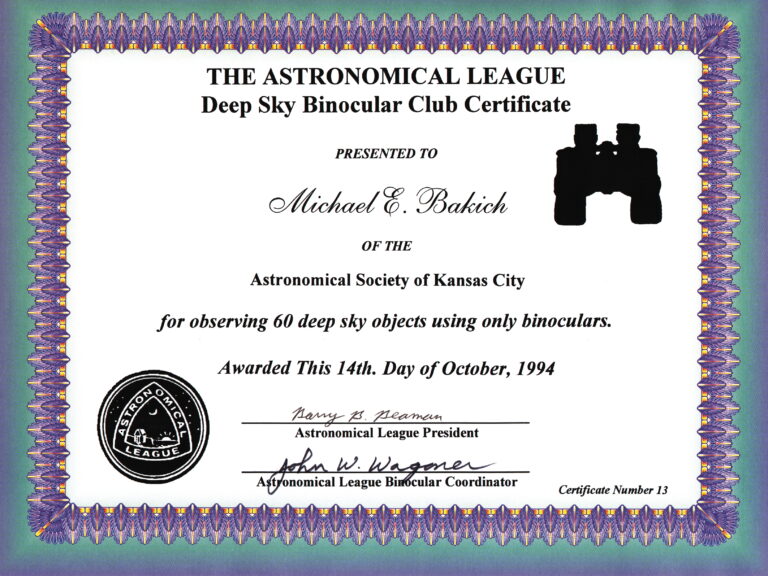Key Takeaways:
The waxing crescent Moon appears 2° to Saturn’s left this evening. The two stand some 15° above the southwestern horizon an hour after sunset and will make a pretty pair with the naked eye or through binoculars. Of course, Saturn makes a tempting target any night this week. The ringed world shines at magnitude 0.6, more than a full magnitude brighter than any of the background stars in its host constellation, Sagittarius. The best views come through a telescope, however, which reveals a 15″-diameter globe surrounded by a spectacular ring system that spans 35″ and tilts 24° to our line of sight.
Although Thanksgiving weekend signifies autumn to many people, the stars of both summer and winter appear prominent in late November’s evening sky. If you head out around 9 p.m. local time and look toward the west, you’ll see the bright stars of the Summer Triangle. These three luminaries — Vega, Deneb, and Altair — stand out nicely. Deneb appears highest (nearly halfway to the zenith), while the brightest, Vega, lies lower in the northwest. Now, if you turn around and face east, you’ll find stars normally associated with winter. Betelgeuse, Rigel, Aldebaran, and Capella all clear the horizon before 8 p.m. and appear conspicuous an hour later.
Saturday, November 30
While the stars of summer and winter remain on view these late November evenings, the stars of spring are not so lucky. The Big Dipper swings low in the north at this time of year. Although this conspicuous asterism never sets from much of the United States and Canada, it does come close. And the star at the end of the handle — magnitude 1.9 Eta (η) Ursae Majoris — does dip below the horizon around 9 p.m. local time for viewers south of 40° north latitude.
Sunday, December 1
The variable star Algol in Perseus appears faintest at 1:29 a.m. EST tomorrow morning, when it shines at magnitude 3.4. If you start watching it immediately after darkness falls, you can see it dim from its peak brightness (magnitude 2.1) to minimum and then rise back to maximum all in a single night. This eclipsing binary star runs through a cycle from minimum to maximum and back every 2.87 days, but the drop from peak brightness and subsequent rise lasts only about 10 hours. Algol appears in the northeastern sky after sunset and passes nearly overhead around 10 p.m. local time.
Algol can guide you to one of the finest binocular star clusters in the late autumn sky. Just after darkness falls, target the variable star through binoculars and place it at the bottom of your field of view. At the top of the field, you should see a hazy patch of light roughly the size of the Full Moon. This is M34, a collection of roughly 100 suns near Perseus’ border with Andromeda. Through 10×50 binoculars, M34’s brightest stars appear to twinkle against the unresolved glow of the cluster’s fainter members.
Venus gleams in the southwest after sunset. The brilliant planet has climbed considerably higher since it reappeared in the evening sky earlier this autumn. Tonight, you can find it 10° high 45 minutes after sunset, when it appears sandwiched between the dimmer worlds Jupiter (to its lower right) and Saturn (to the upper left). Although magnitude –3.9 Venus stands out to the naked eye, binoculars reveal a bonus: the 5th-magnitude globular star cluster M22. This fine cluster lies less than 1° north of the planet this evening. A telescope shows Venus’ 12″-diameter disk and 88-percent-lit phase.
Tuesday, December 3
You can find the First Quarter Moon high in the south as darkness falls, then watch as it sinks toward the western horizon throughout the evening hours. Our satellite officially reaches First Quarter phase at 1:58 a.m. EST tomorrow morning (10:58 p.m. PST tonight). The Moon lies among the faint background stars of Aquarius the Water-bearer all night.
It’s time to grab your final views of Jupiter before it succumbs to the Sun’s glare. You can find the giant world just 6° high in the southwest a half-hour after sunset. It shows up if you have an unobstructed horizon largely because it remains bright, glowing at magnitude –1.8. Only the Moon and Venus appear brighter. Jupiter sinks lower with each passing day and will disappear next week on its way to solar conjunction December 27.
The Moon reaches apogee, the farthest point in its orbit around Earth, at 11:08 p.m. EST. It then lies 251,311 miles (404,446 kilometers) from Earth’s center.
Thursday, December 5
Mercury remains a fine sight in morning twilight this week. The innermost planet shines at magnitude –0.6 and appears about 10° above the southeastern horizon 30 minutes before the Sun rises. That’s bright enough to see with the naked eye, although binoculars will help you to pick it out of the twilight glow. When viewed through a telescope, the planet’s 6″-diameter disk appears nearly 80 percent lit.
The Geminid meteor shower gets underway this week. Although the shower doesn’t peak until December 14, you may get a better view now because a nearly Full Moon will share the sky on the peak night. For the best views, observe after the waxing gibbous Moon sets — around 12:30 a.m. local time this morning and about an hour later each successive day — and before twilight begins around 5:30 a.m. To tell a Geminid meteor from a random dust particle burning up in Earth’s atmosphere, trace the streak of light’s path backward. A shower meteor will appear to originate from the constellation Gemini the Twins.
Friday, December 6
Look high in the south after darkness falls this week and you should see autumn’s most conspicuous star group. The Great Square of Pegasus stands out in the evening sky at this time of year and, because it lies due south, it looks like a nearly perfect square. These four almost equally bright stars form the body of Pegasus the Winged Horse. The fainter stars that represent the rest of this constellation’s shape trail off to the square’s west.
Saturday, December 7
Ruddy Mars grows more prominent before dawn with each passing week. The Red Planet now rises around 4:30 a.m. local time and climbs nearly 20° above the southeastern horizon an hour before sunrise. Mars glows at magnitude 1.7, which is a full magnitude brighter than any of the background stars belonging to its host constellation, Libra the Scales. Unfortunately, a telescope doesn’t add much to the view, revealing a bland disk only 4″ across.
Sunday, December 8
Although people in the Northern Hemisphere won’t experience the shortest day of the year for another two weeks (at the winter solstice December 21), those at 40° north latitude will see the Sun set earlier today than at any other time this year. Tomorrow’s sunset will arrive about two seconds later and, by the solstice, our star will set three to four minutes later than today. The date of earliest sunset depends on latitude — the farther north you live, the closer it occurs to the solstice.


